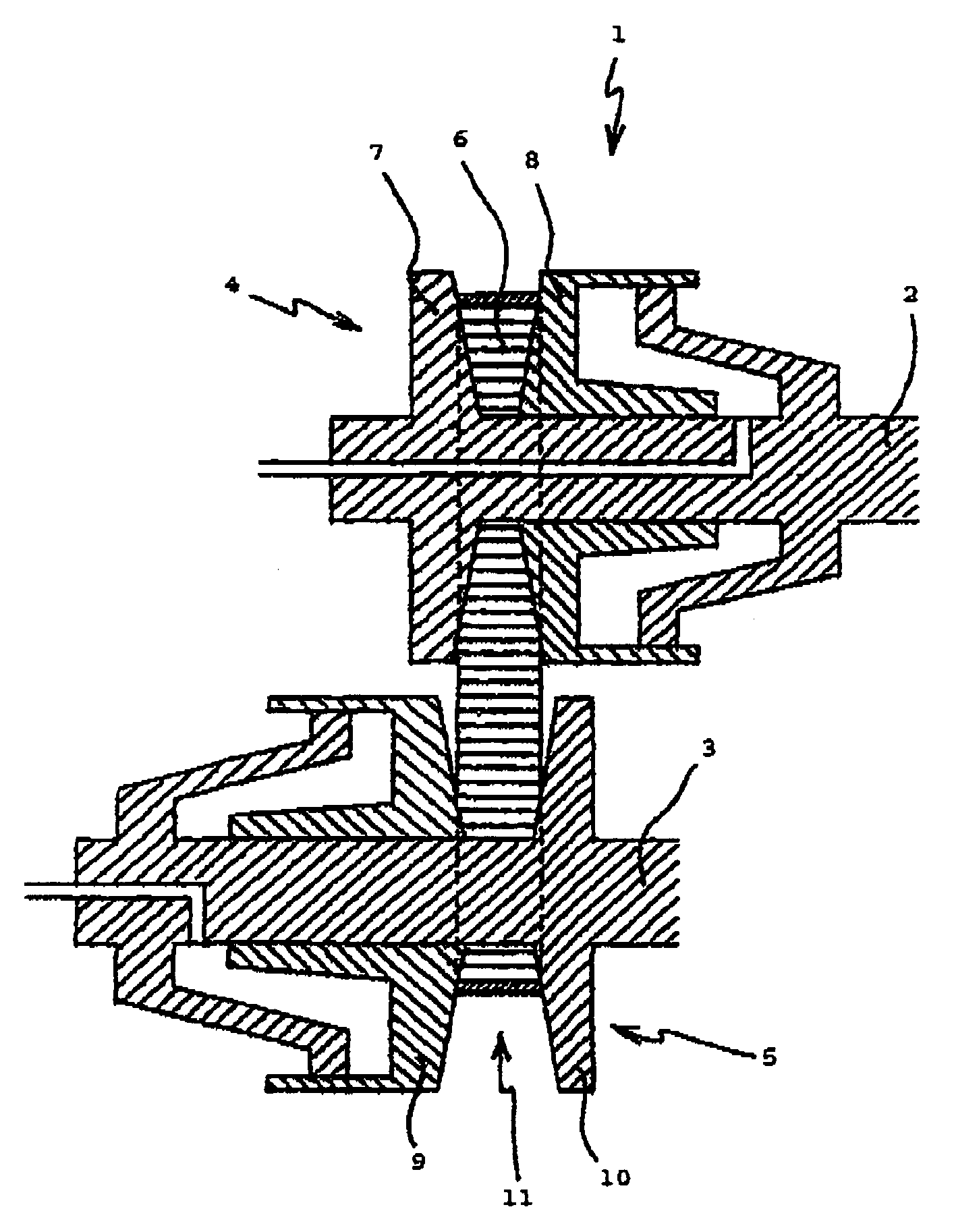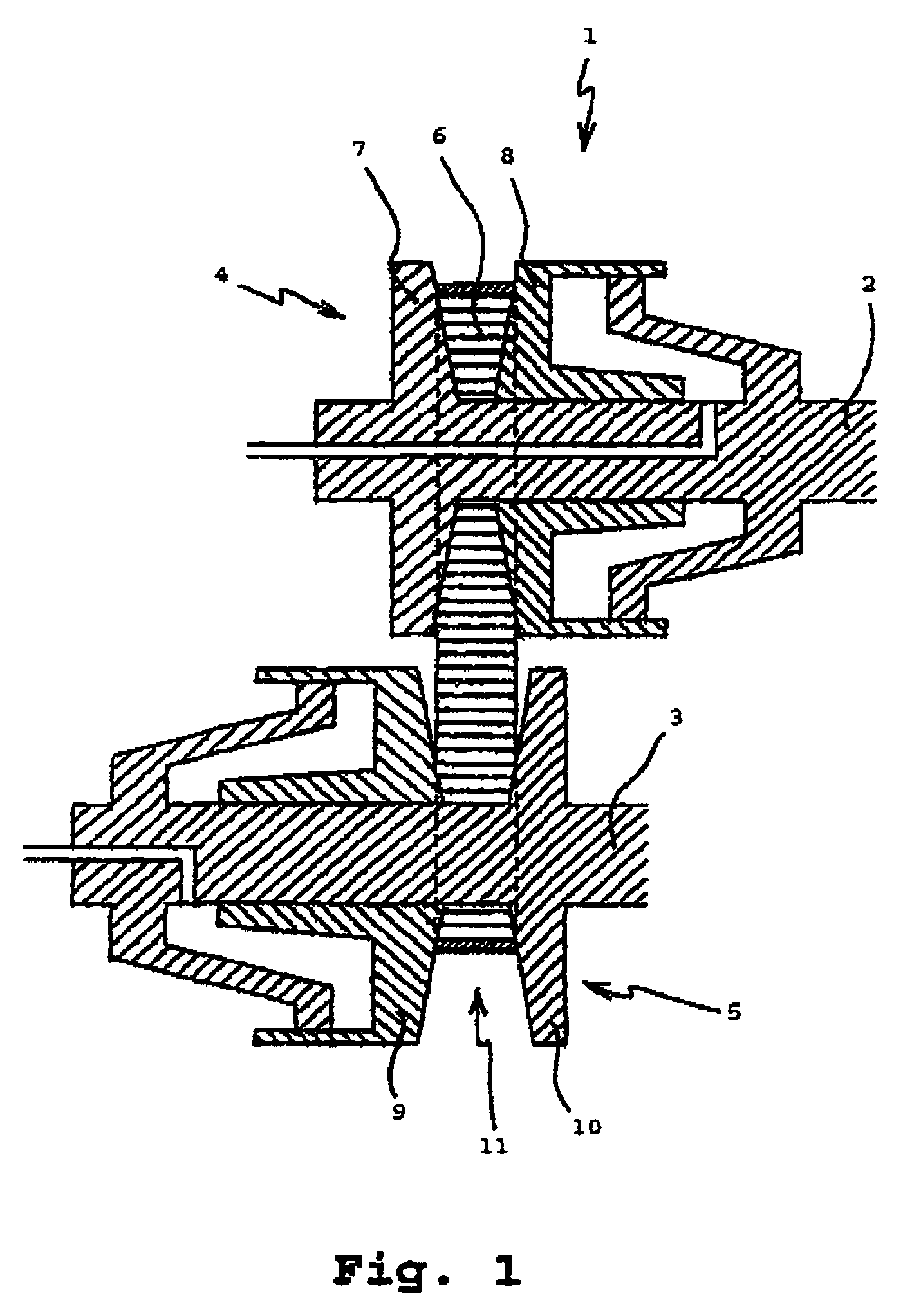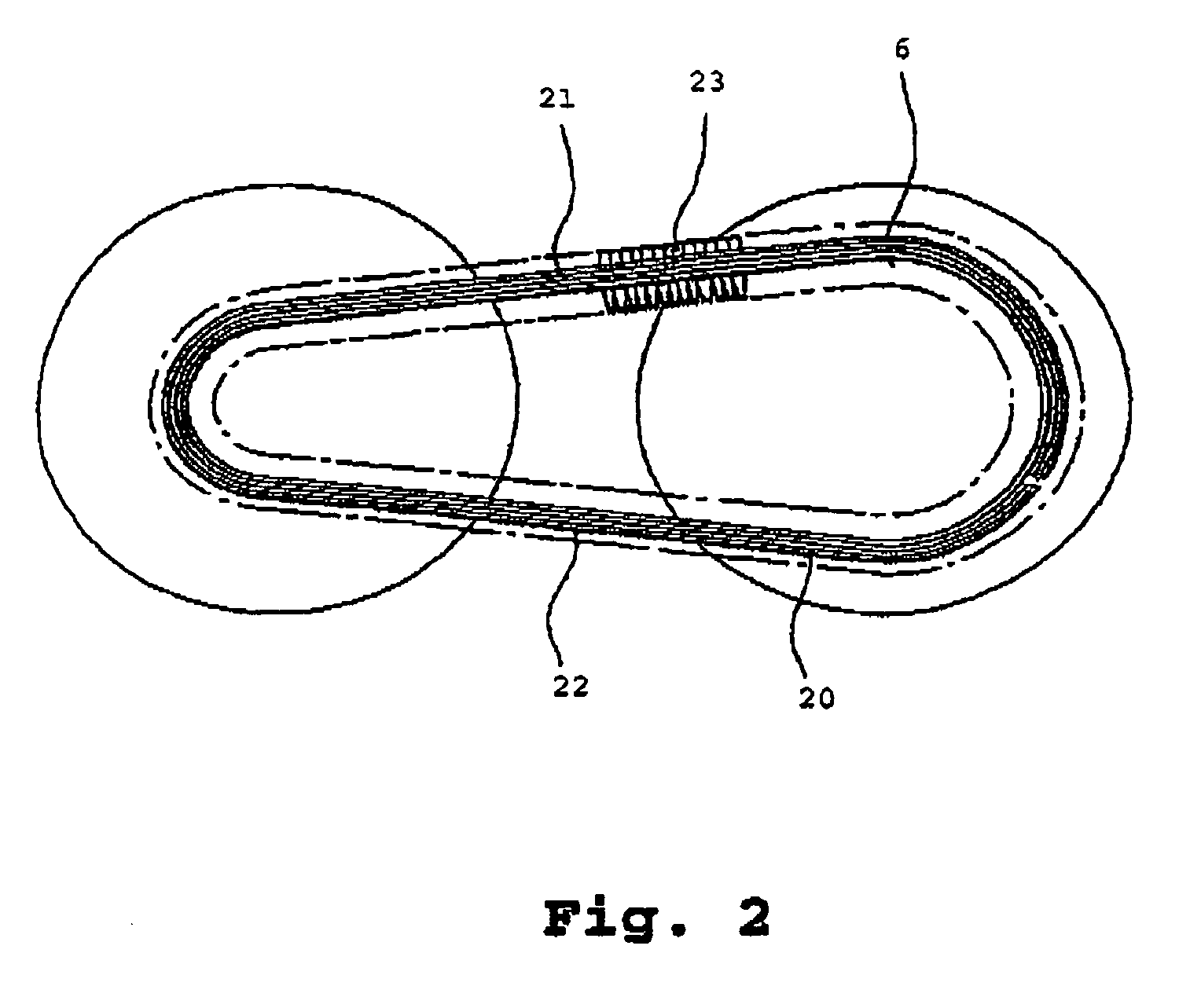Transverse element for a drive belt for a continuously variable transmission
- Summary
- Abstract
- Description
- Claims
- Application Information
AI Technical Summary
Benefits of technology
Problems solved by technology
Method used
Image
Examples
Embodiment Construction
[0029]FIG. 1 shows diagrammatically a continuously variable transmission, such as for utilization in a motor vehicle. The continuously variable transmission is indicated in general by the reference sign 1.
[0030]The continuously variable transmission 1 comprises two pulleys 4 and 5 being arranged on separate pulley shafts 2 and 3. An endless drive belt 6 being shaped like a closed loop is arranged around the pulleys 4 and 5 and serves for transmitting torque between the pulley shafts 2 and 3. The pulleys 4 and 5 are each provided with two conical sheaves 7 and 8 respectively 9 and 10, which collectively form a partially conical receiving groove 11 in which the drive belt 6 is received.
[0031]The transmission ratio of the continuously variable transmission is determined by the ratio of the running radii of the drive belt 6 in the receiving groove 11 of the pulleys 4 and 5. The running radii can be varied by mutually displacing the pulley sheaves 7 and 8 respectively 9 and 10 with the a...
PUM
 Login to View More
Login to View More Abstract
Description
Claims
Application Information
 Login to View More
Login to View More - R&D
- Intellectual Property
- Life Sciences
- Materials
- Tech Scout
- Unparalleled Data Quality
- Higher Quality Content
- 60% Fewer Hallucinations
Browse by: Latest US Patents, China's latest patents, Technical Efficacy Thesaurus, Application Domain, Technology Topic, Popular Technical Reports.
© 2025 PatSnap. All rights reserved.Legal|Privacy policy|Modern Slavery Act Transparency Statement|Sitemap|About US| Contact US: help@patsnap.com



